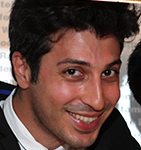You probably know the importance of early customer development if you’re acquainted with entrepreneurship and startup blogs. If not, read customer development by Ash Maurya. I’ll wait. Often early customer development is summarized with the expression “get out of the building” which is popularized amongst others by Steve Blank. The idea is to gather data – qualitative data – about customer problems and potential solutions.
Qualitative data is about describing something whereas quantitative data is about measuring or counting information (i.e., quantifying). There’s already tons of great material how and what to ask your potential customers. So, I won’t start from scratch. I want to refine what is already out there with asking methods used in academic research. This will help enhance your understanding of what your customers want – the best starting point for building a great product.
There are different ways to gather qualitative data. In this part we look at one of the most common methods – interviews. A good qualitative interviewer is flexible and wants to fully grasp the worldviews of research participants (i.e., your potential customers). That’s why qualitative interviews help you build a great product. Grasping the worldview of your potential customers will de-risk building the wrong product and minimize headaches (any person who has build the wrong stuff like I’ve done knows what I’m talking about).
Interviews in qualitative research are either semi-structured or completely open. In customer development semi-structured interviews might be more useful, as it is easier to compare and contrast the answers. Let’s start with the different kinds of questions used by researchers. Spradley (1980) categorizes questions into:
- Descriptive: Easiest to ask. Example: “What you do when you want to learn something new?”
- Structural: This kind of question helps you understand HOW informants organize their knowledge. Some structural questions might be:
- Strict Inclusion (x is a kind of y): “What are the different kind of apps you have installed on your phone?”
- Means End (x is a way to do y): “What do you do to train yourself on the job?”
- Cause-Effect (x is the result of y): “What are the causes that you don’t educate yourself more often?”
- Contrast: Gives the interviewer an idea through which dimensions informants distinguish objects.
- Dyadic: “What’s the difference between online and offline learning?”
- Triadic: ”Thinking about doing an online course (1), assembling your own ‘course’ through video tutorials (2) or reading an eBook (3), which of these options seems to be most promising regarding learning efficacy?”
- Rating: ”Which of these options seems to be the most difficult?” Note: Contrast-rating questions can help you rank the most important problems of your potential customers.
Then, there are the different scopes of questions:
- Grand tour questions: The goal is to find out the names of places and objects, activities, etc. and to understand how all of these elements are interrelated (“Tell me, who decides what kind of on-the-job-education your employees receive? I mean, how and how often is the process? Are there different learning options to choose from?”). Grand tour questions are often expanded and repeated with other words to give the interviewee more time to reflect about the question. For customer development, I wouldn’t suggest to use grand tour questions if you only have 15 to 20 minutes per interviewee. However, in some cases it makes sense. First, if you have more time (let’s say 45 to 60 minutes) AND if you quickly lead the next question to a more focused mini tour question.
- Mini tour questions: these questions deal with a much smaller unit of the whole experience. (“How are the learning options chosen?”).
- Specific mini tour questions: Concrete examples (“So, how were the learning options chosen for ‘Ms. X’ last week?”).
Johnstone (2007) gives great and concise suggestions how to structure qualitative interviews. The summary of the summary:
- Plan topics in advance
- Set the stage by explaining the purpose and how you will protect confidentiality and the interviewee’s identity.
- Start with a quick but broad background question (who the person is and how she came to the position) to put the interviewee in a right frame of mind.
- Questions should be open-ended (“tell me about…”) and NOT leading (“So, you mean x?”)
- Probing questions(“Can you please elaborate?”/ “Do you have an example”). Don’t over do it. Only keep digging if you are onto something.
- Silence: Gives interviewees time to reflect and elaborate.
- Be grateful for the interview and just before you end it and ask: “Is there anything further you want to tell me?”
And don’t forget to keep in touch for doing follow-up interviews when you have your first Minimum Viable Product (first product release only with key features) ready. Qualitative interviews have opened up the doors for many new solutions that you usually would never have thought of. That’s enough for now.
Analyzing qualitative data is often very messy. For early customer development categorizing similar answers with the same “tag” (a.k.a. “coding”) should be enough. Often you will discover causal relationships between the tags, which enhance your understanding of your customers’ problems – a great foundation for building a great product.
This is a two-part series why qualitative data is fundamental for understanding entrepreneurship and startups. Part two discusses ethnography.
References:
Johnstone, B. 2007. Ethnographic Methods in Entrepreneurship Research. In H. Neergaard & J. P. Ulhøi (Ed.), Handbook of Qualitative Research Methods in Entrepreneurship: 97–121. Cheltenham: Edward Elgar Publishing.
Spradley, J. 1980. Participant Observation. New York: Holt, Rinehart and Winston.
Image credit: Interviewed by Jack M.

